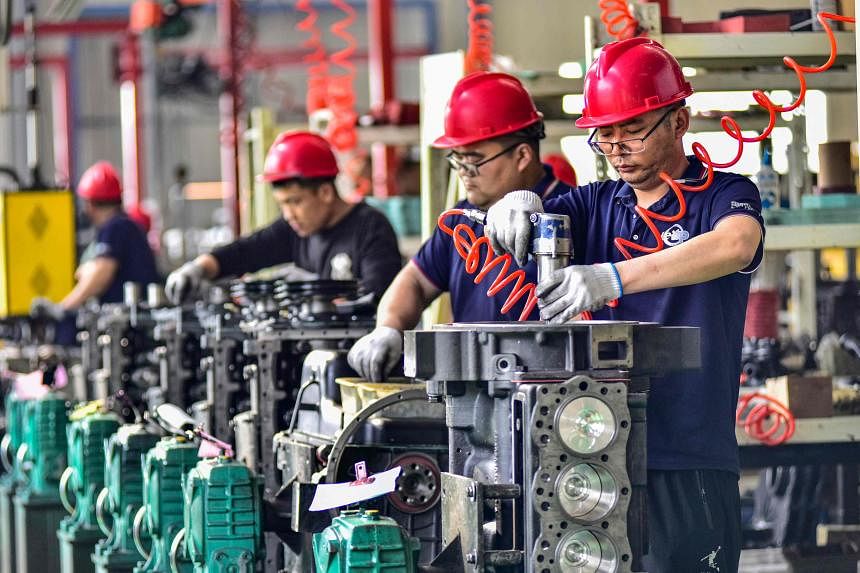


BEIJING – The groundswell of complaints about China’s factory output keeps getting louder, but there is no sign Beijing is ready for fixes that might backfire on its vulnerable economy.
This week European Union leaders, who are threatening tariffs on electric vehicles (EVs), were the latest to scold China about overcapacity. Before she met visiting President Xi Jinping, the bloc’s chief Ursula von der Leyen said she is hoping for action in the “short term”.
She will likely be disappointed. China did announce proposals on May 8 to slow expansion in the battery industry, but they’re not binding. Meanwhile, the state planning agency last week published a four-part rebuttal of claims that the country has too much capacity to make clean-energy products. It said Chinese industry is competitive thanks to innovation, not subsidies.
That has become Beijing’s standard line about high-tech industries like EVs and solar panels. They are crucial to Mr Xi’s blueprint for reviving the economy – which is why China probably will not stop supporting them, however much it is urged to. They are strategically important for other countries too, which is why trade barriers are going up.
But China’s trade partners – including friendly ones like Brazil — are also raising objections about all kinds of products lower down the value chain, from steel and petrochemicals to excavators. In many of these areas, surpluses emerged as an unwanted side-effect of the real estate slump weighing down China’s economy.
Beijing has not figured out how to halt that slide yet, except by turning to high-tech as an offset, so both types of over-production are set to persist.
“There is no single, quick fix for China’s overcapacity challenge,” said Mr Frederic Neumann, chief Asia economist at HSBC Holdings. In clean energy the root cause is China’s “robust investment”, he said, while in more traditional industries the problem is weak demand, “especially from faltering housing construction.”
What’s ultimately needed, according to Mr Neumann, is “a two-pronged approach” to balance supply and demand, which involves stabilising China’s housing market and helping consumers to spend more.
But that is a big ask – as even some of China’s strongest capacity critics admit.
US Treasury Secretary Janet Yellen’s recent visit was dominated by the issue. Her team repeatedly chided Beijing for steering state funds into key industries, propping up money-losing companies and flooding world markets with exports that threaten the livelihood of local firms.
The US view is that China should rely more on demand from its own consumers, and less on the rest of the world. Dr Yellen acknowledged the scale of that challenge. “This is a complicated issue that involves their entire macroeconomic and industrial strategy,” she told reporters in Guangzhou. “It’s not going to be solved in an afternoon or a month.”
Right now, far from being ready to shoulder more of the burden of driving growth, Chinese households and local governments are tightening their belts after the housing crash.
With domestic demand weak, the industrial capacity utilisation rate dropped last quarter to the lowest since the pandemic hit in early 2020. Factories are pivoting to overseas markets, exports have soared and prices plunged.
The solar panel industry is one case where there’s a glut, after a massive expansion led to a price war and a collapse in profitability.
In autos, the picture is more complex. Capacity use dropped sharply in the first quarter of this year, but major exporters of EVs – like BYD and Tesla – have been running at higher levels than the industry overall, according to estimates from JSC Automotive. That points to a growing number of idle factories which used to make petrol cars and got caught out by China’s rapid switch to EVs.